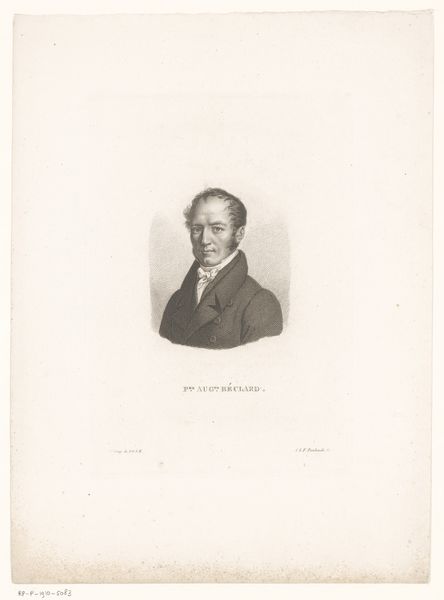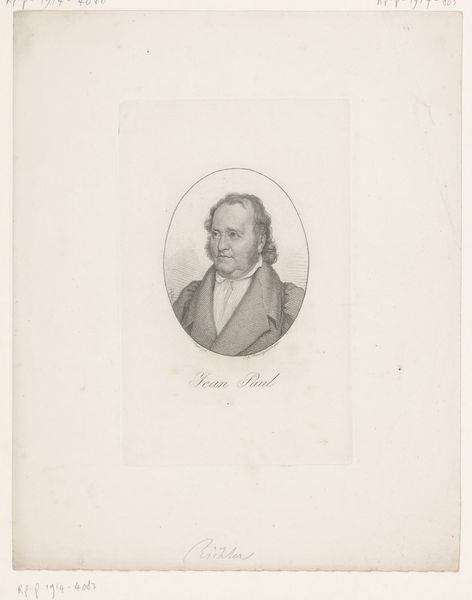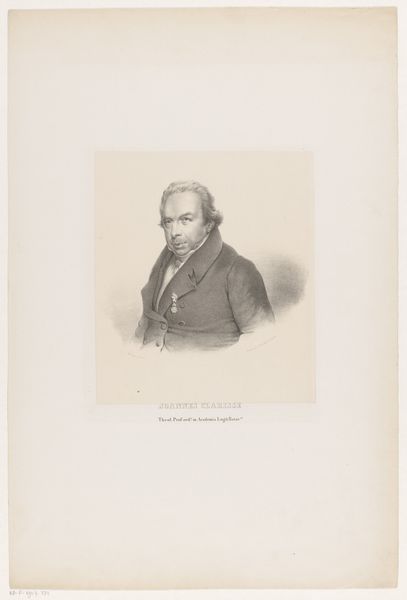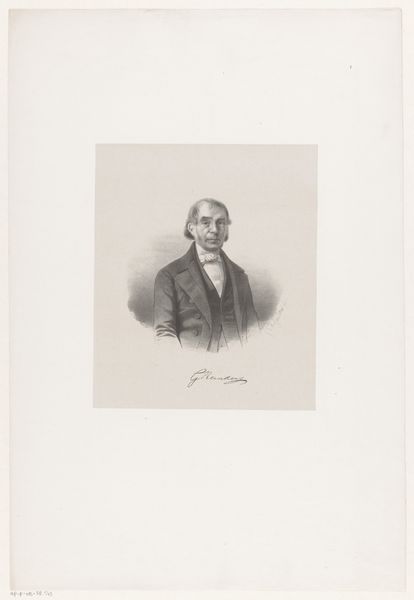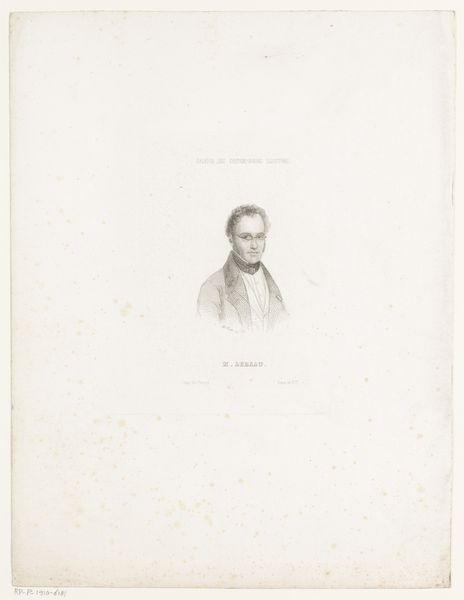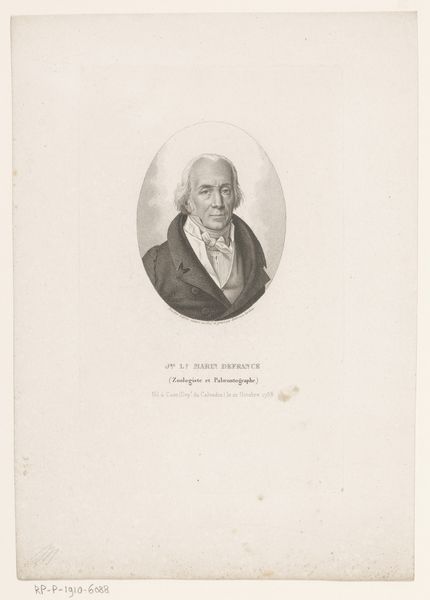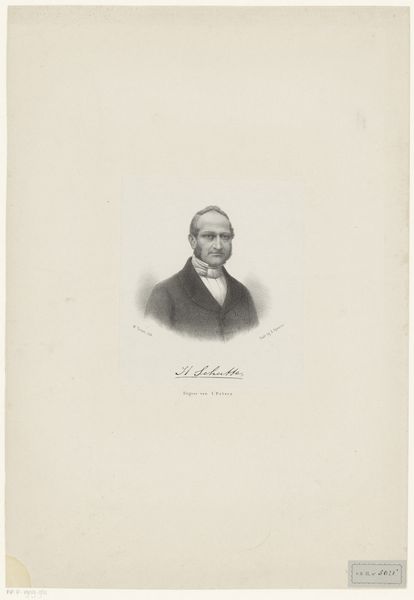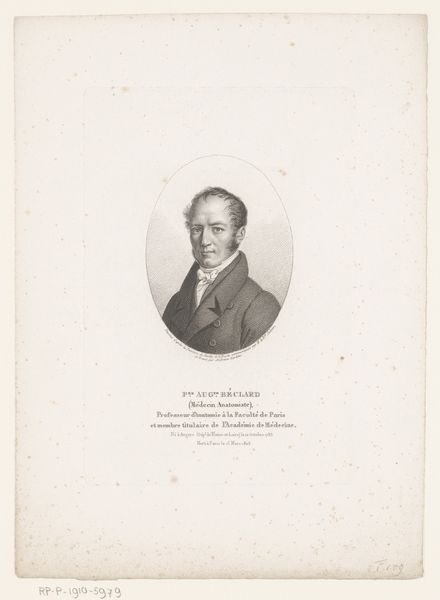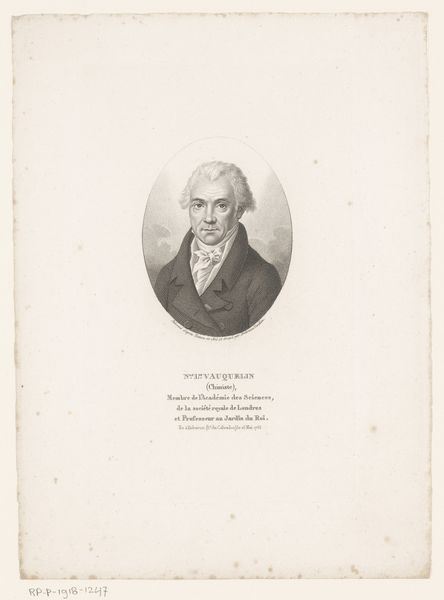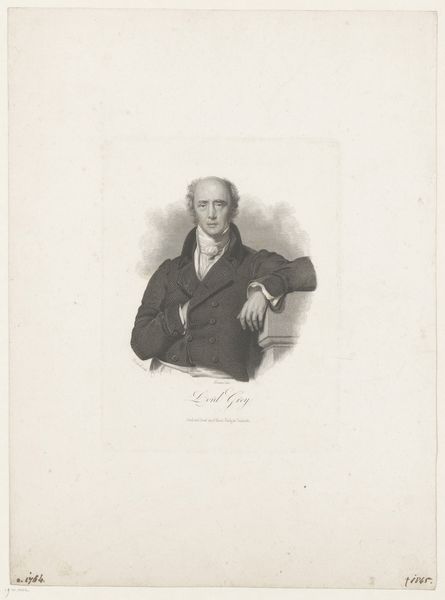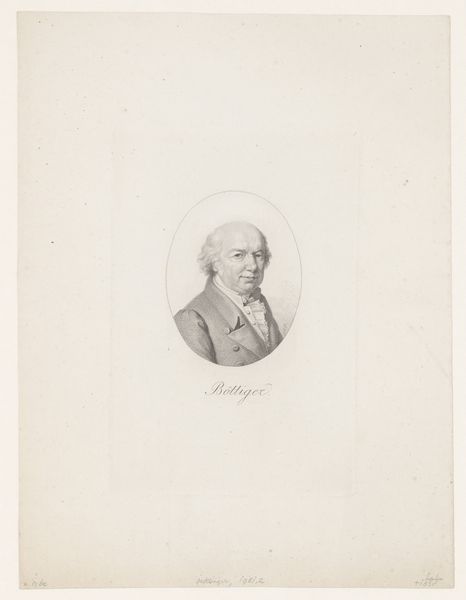
print, engraving
#
portrait
#
neoclacissism
# print
#
old engraving style
#
pencil drawing
#
engraving
Dimensions: height 359 mm, width 273 mm
Copyright: Rijks Museum: Open Domain
Curator: Before us, we have a portrait, "Portret van George Canning," created in 1832 by Antoine Maurin, now residing here at the Rijksmuseum. Editor: It projects a kind of stern confidence, doesn't it? The way he’s framed by all that open space seems to amplify his presence, even though the etching itself feels quite delicate. There’s almost a loneliness there too, surrounded by so much negative space. Curator: Indeed. Consider the meticulous detailing of the engraving. Maurin has masterfully used line work to render the texture of Canning’s coat, the subtle shading of his face, the intricate folds of his cravat. It adheres to a Neoclassical sensibility, emphasizing clarity of form and idealized representation. Editor: While acknowledging Maurin's technical skill, I wonder about the portrayal of power it conveys. This image presents us with George Canning, a prominent, privileged white man. His very stance, the sharp tailoring of his clothing, it speaks volumes about societal structures. Who was this work made for, and how does it play into perpetuating certain ideologies? Curator: It's undeniable that portraiture of this era often served specific socio-political functions. However, let's also appreciate how the formal qualities, the balance of light and shadow, create a compelling visual experience irrespective of its historical context. The delicate shading, achieved through precise engraving, adds depth and realism to the figure. Editor: But that historical context is inescapable. Understanding Canning's political life—his role in British foreign policy and stance on social issues—helps us interpret the image not merely as a formal exercise but as a cultural artifact imbued with meaning. His policies, viewed through a contemporary lens, have consequences that require consideration. How might those impacted by his policies interpret this portrait? Curator: Perhaps. Ultimately, the value lies in the nuanced balance of formal artistic qualities and its place in history. To perceive the harmony in line and form in combination with its representation as a historical man offers us insight into a unique artistic work. Editor: Perhaps we can use these observations to look further and deconstruct what sits beneath the portrait and understand whose voices are missing.
Comments
No comments
Be the first to comment and join the conversation on the ultimate creative platform.
